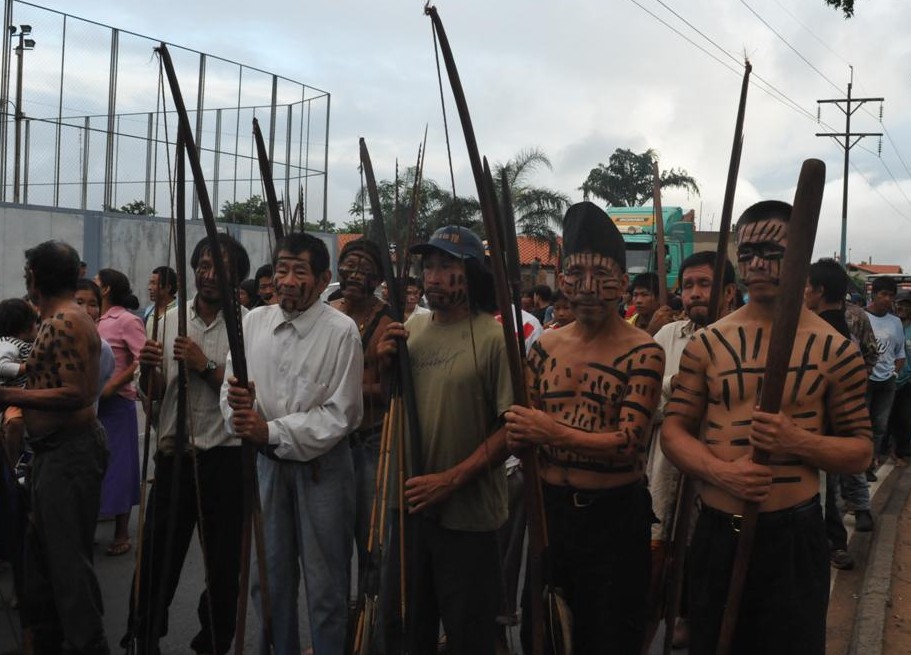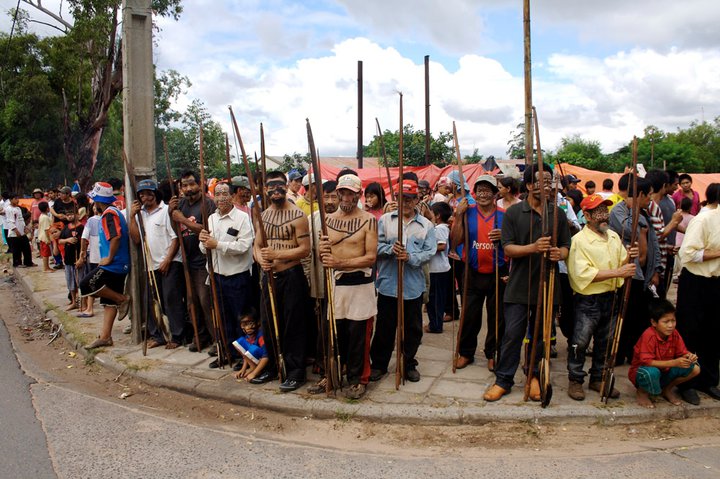 The Aché Peoples are traditional hunter-gatherers living in the Atlantic coastal forests of eastern Paraguay. The Aché are also known as the Axe people. In the past they have been called the Guaiaqui, Guayakí, Guayaki-Ache, and Guoyagui by Guaraní-speaking neighbors and by early anthropologists, however, these terms are now considered derogatory.
The Aché Peoples are traditional hunter-gatherers living in the Atlantic coastal forests of eastern Paraguay. The Aché are also known as the Axe people. In the past they have been called the Guaiaqui, Guayakí, Guayaki-Ache, and Guoyagui by Guaraní-speaking neighbors and by early anthropologists, however, these terms are now considered derogatory.
Before the 1960s, the Aché lived in small nomadic bands. Groups of allied bands with a common dialect, common rituals, and affinal relations formed a larger political unit known as irondy or “those who are like me.” There were four of these groups living in eastern Paraguay at the time of peaceful contact in 1959: the Northern Aché, the Aché ua, the Aché pura, and the Ñacunday Aché. The Northern Ache roamed an area of about 18,500 square km between the Acaray River and the Jejui River drainage systems (Hill & Hurtado 1996: 49), while the Aché ua and Aché pura occupied a much smaller area south of the Northern Aché home range in the foothills of the Yvytyruzu Mountains. The core area of the Ñacunday Aché was approximately two hundred kilometers east of the Yvytyruzu Mountains in the headwaters of the Ñacunday River. [1]
The Aché have suffered repeated abuses by rural Paraguayan colonists, ranchers, and big landowners. For instance, in the 20th century, the Northern Aché were confined to two reservations that totaled a mere 50 square kilometers. Prior to this confinement, they were the only inhabitants of an area that spanned 20,000 square kilometers. In recent times, they have faced massacres, enslavement, and crushing isolation in order to make room for investors (mainly Brazilian) to move in and develop Aché lands. [2]
Today, the Ache reside on five reservations. Two communities have resident Catholic missionaries, two are associated with Protestant missionaries, and one has recently evicted Protestant missionaries and is independent.
The reservation economy is a mix of swidden agriculture (manioc, maize, and yams are the primary crops), foraging, and wage labor. [3]
1. http://www.mpi.nl/DOBES/projects/ache/people
2. http://en.wikipedia.org/wiki/Ach%C3%A9
3. http://www.unm.edu/~kimhill/papers/ache.html


